How to Record Conversations on Your iPhone: A Complete Guide
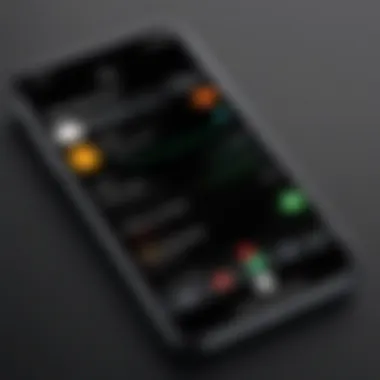

Intro
Recording conversations on an iPhone can serve various purposes, from capturing important meetings to preserving personal memories. Many users may not be aware of the tools available within their devices. Apple’s ecosystem supports both built-in functionalities and third-party applications that facilitate high-quality audio recordings. It is essential to understand the methods and best practices for successfully recording conversations while being mindful of legal considerations surrounding privacy.
This guide aims to provide a clear pathway for users to embrace the capabilities of their iPhones for audio recordings. In this article, we will investigate the relevant technologies, explore the tools available, and delve into the legal implications that accompany the act of recording conversations. By the end, users should feel empowered to effectively use their devices, ensuring informed and compliant recording practices.
Foreword to Conversation Recording
Recording conversations can be a crucial skill in various contexts, such as interviews, meetings, and personal discussions. With the advent of smartphones, particularly the iPhone, the ability to capture audio has become more accessible than ever. This article delves into how iPhone users can effectively record conversations, highlighting essential features, methodologies, and legal implications.
One of the primary benefits of conversation recording is the ability to maintain accuracy. Notes may be incomplete or misinterpreted, while recorded audio serves as a reliable reference. This is vital in professional settings, where clarity and documentation can influence decisions and outcomes.
Moreover, recording conversations fosters transparency and accountability. For example, in negotiations or critical discussions, all parties can have a clear record of what was said. This can help avoid misunderstandings and provide clarity on agreements.
However, it is essential to approach conversation recording with caution. Legal considerations, such as consent laws, vary by region and must be understood before initiating any recording. Ignoring these laws can lead to serious implications, including legal repercussions and strained relationships.
In summary, understanding the nuances of conversation recording can empower iPhone users to utilize their devices more effectively. The importance lies not only in mastering the technical aspects but also in navigating the ethical and legal frameworks that govern this capability. As we further explore this topic, we will cover the iPhone's capabilities, available applications, and best practices, ensuring an informed approach to recording conversations.
Understanding iPhone Capabilities
Understanding the capabilities of an iPhone is critical for users who wish to maximize their audio recording experience. The device comes equipped with a variety of built-in features intended to simplify and enhance the recording process for conversations. Knowledge of these features can lead to more effective use, allowing users to capture important discussions, interviews, or personal notes easily.
Audio Recording Features
The iPhone’s audio recording features are robust and cater to a range of needs. The primary application for recording audio is the Voice Memos app, which offers intuitive functionality. With it, users can quickly record conversations with just a few taps. The recorded audio quality is generally impressive, thanks to the built-in microphones designed for clarity.
- Below are key features available in the Voice Memos app:
- One-tap recording: Instantly start recording without complex setups.
- Pause and resume: Easily pause recordings if necessary, which is useful during conversations.
- Trimming capabilities: Users can edit recorded files to remove any unnecessary portions.
- Share function: Recordings can be shared through Messages, Mail, or social media.
Limitations of Built-in Options
While the built-in options are convenient, they do have limitations that users should consider. The Voice Memos app, while functional, may not meet all requirements for more specialized recording needs. One major concern is storage space. Long recordings can quickly consume storage on the device, particularly if the storage capacity is limited.
Additionally, the iPhone does not always guarantee complete compatibility when attempting to record phone conversations. This lack of support for call recording can leave users looking for alternative solutions. Furthermore, sound quality can vary based on environmental conditions, which introduces another variable not easily controlled.
"Understanding both the capabilities and limitations of your iPhone will make your recording experience more efficient and satisfying."
In summary, acknowledging the capabilities of your iPhone will help users make informed decisions as they explore the world of audio recording. However, recognizing the constraints will guide those seeking more advanced solutions towards third-party applications.
Legal Considerations for Recording Conversations
Understanding the legal considerations surrounding recording conversations is vital for anyone using an iPhone for this purpose. The intersection of technology and law creates a complex landscape that can have serious implications. Knowing the relevant laws in your jurisdiction protects you from legal action and cultivates responsibility as a user. This section seeks to shed light on important aspects of recording conversations legally while using an iPhone, outlining key laws and ethical practices to avoid potential pitfalls.


Understanding Consent Laws
Consent laws dictate whether you can legally record a conversation, and they can vary significantly by location. In many jurisdictions, the law distinguishes between one-party consent and two-party consent.
- One-party Consent: In places where one-party consent is legal, you can record conversations as long as you are a participant or have approval from at least one participant. This simplifies recordings for personal use or business conversations where your presence is evident.
- Two-party Consent: Conversely, jurisdictions requiring two-party consent necessitate that all participants be aware of and agree to the recording. Not adhering to this law can lead to severe repercussions. It is essential to confirm whether your area follows one-party or two-party laws before proceeding with conversations.
To avoid confusion, it is advisable to inform your conversation partners beforehand. This promotes transparency and ethical behavior. In situations involving sensitive topics, willingness to consent can be even more crucial.
Implications of Non-compliance
Failing to comply with consent laws can lead to various legal repercussions, which can disrupt both your personal and professional life. Possible outcomes include:
- Legal Penalties: Engaging in non-consensual recording can result in criminal charges, fines, or civil lawsuits. Legal systems take violations seriously, and consequences can escalate with intent, such as when recording in predatory situations.
- Loss of Trust: If individuals discover that you recorded them without permission, it can damage relationships irrevocably. Trust is fundamental in both personal interactions and business environments, and any breach may not be easily mended.
- Impact on Evidence: In legal proceedings, evidence obtained illegally may be inadmissible. For example, if you record a conversation without proper consent, a court might refuse to consider it, ultimately harming your case if it was pivotal information.
Careful understanding of these implications is essential before initiating a recording. Navigating the legal intricacies of conversation recording on an iPhone necessitates forethought and respect for both ethical and legal dimensions.
Using the Voice Memos App
The Voice Memos app is a native application on the iPhone that offers users a straightforward and efficient way to record audio. This tool is particularly valuable for recording conversations, meetings, and personal notes, as it is easily accessible and user-friendly. Understanding how to leverage the Voice Memos app is essential for anyone looking to capture audio effectively on their device.
Step-by-Step Recording Process
To begin recording conversations using the Voice Memos app, follow these simple steps:
- Open the App: Locate the Voice Memos app on your iPhone home screen and tap to launch it.
- Prepare for Recording: Ensure you are in a quiet environment, as background noise can affect audio quality.
- Start Recording: Tap the red circular record button. The app will start capturing audio immediately.
- Pause/Resume: You can pause the recording by tapping the pause button. When ready to continue, tap the record button again.
- Stop Recording: Once you have finished, tap the red square stop button.
- Save Your Recording: The app will prompt you to name your recording. Choose a descriptive name for easy retrieval later.
Following these steps ensures that you can easily and quickly capture important conversations without missing critical details.
Editing and Organizing Recorded Files
Effective organization and editing of recorded files can help manage your audio content. Here are key functionalities within the Voice Memos app you can utilize:
- Trimming Recordings: If certain portions of the audio are not needed, you can trim them. Tap the recording, then select the three-dot menu and choose "Edit Recording." Use the trimming tool to adjust the start and end points.
- Renaming Files: Clear labels can assist in organizing your recordings. Tap on the recording, select the name at the top, and type the new name.
- Adding to Folders: If you accumulate numerous recordings, consider creating folders. Tap the "New Folder" button and move relevant recordings to that folder for better organization.
- Sharing Options: The app allows you to share recordings via email or messaging apps. Simply tap on the recording you wish to share, select the share icon, and choose your method of sharing.
By utilizing these editing and organizing features, you can maintain a clean and accessible collection of your audio content, allowing for easy reference when needed.
Voice Memos provides a convenient solution for professionals needing to document important conversations while on the go.
Third-Party Applications for Advanced Recording
Third-party applications are vital for users seeking advanced capabilities in conversation recording. While the built-in functions of the iPhone offer basic audio recording, they often lack functionalities needed for more complex recording needs. Advanced apps provide enhanced features that empower users to optimize sound quality, manage files efficiently, and incorporate additional functionalities like transcription and organizing tools. Choosing the right app can significantly improve the recording experience, making it not just an option but a necessity for those requiring precision and convenience in their audio recordings.
Popular Apps to Consider
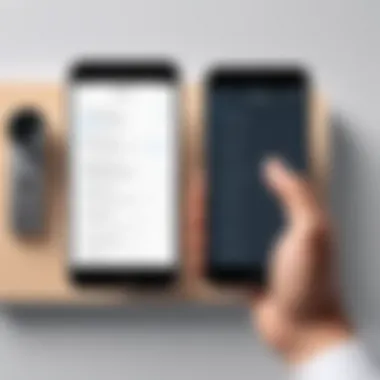
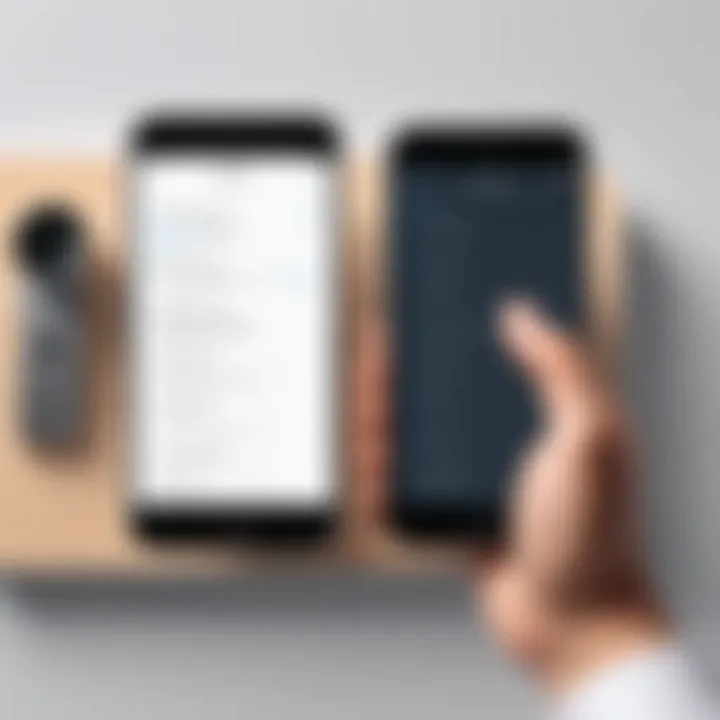
There are several notable applications that stand out when it comes to recording conversations on the iPhone:
- Rev Voice Recorder: This app allows users to record conversations and offers paid transcription services. The user interface is intuitive, making it easy to access recorded files.
- Otter.ai: Known for its transcription capabilities, Otter is effective for meetings and interviews. Its real-time transcription can serve many professional needs, making it a favorite among users.
- Voice Recorder & Audio Editor: This application combines several editing tools and is equipped with features such as file sharing and integration with cloud storage.
- TapeACall: This app specializes in recording phone calls. It has a straightforward setup and provides options to share recordings immediately after completion.
Each of these apps serves specific purposes, from transcription to straightforward recording. Their versatility caters to a wide range of needs.
Comparative Analysis of Features
When selecting a third-party recording app, it is crucial to analyze various features to identify which one aligns best with individual needs. Below are common features to consider:
- Audio Quality: Not all apps provide high-definition recording. Evaluating audio quality is vital for users who need clarity in their recordings.
- Transcription Services: Apps like Rev offer paid transcription, while others may provide automatic transcription as a feature. This can save time for users who require written records.
- File Management: Look for applications that allow easy organization of files, including tagging and categorizing recordings, enabling quick retrieval.
- Sharing Options: The ability to share recordings directly via email or cloud services increases convenience. Ensure the app supports popular platforms.
- User Experience: A user-friendly design can enhance usability. Consider apps that offer straightforward navigation.
Consider each feature carefully based on individual requirements. Choosing the right app can improve not only the efficiency of recording but also how those recordings are utilized.
"The right tools can transform a simple conversation into a valuable resource. Choosing the appropriate app makes this possible."
Utilizing iCloud and Storage Solutions
Utilizing iCloud for recording conversations on an iPhone is a significant aspect to consider. iCloud serves as a bridge between your devices and storage management. The integration is designed to enhance the user experience by simplifying how recordings are stored, accessed, and organized. If you intend to keep your recordings safe and easily retrievable, leveraging iCloud can be immensely beneficial.
In particular, managing storage becomes crucial when dealing with various recorded files. Each recording takes up space, and without a proper plan, you risk running out of storage on your iPhone. Using iCloud mitigates this problem effectively. With iCloud, users can store their audio files remotely, freeing up local device storage while ensuring files are still accessible from the same Apple ID across all devices.
Moreover, iCloud provides the added benefit of automatic backups. This means that in case of loss or device failure, recordings remain secure in the cloud and can be restored easily. This feature not only safeguards your data but also instills confidence in users when utilizing the recording capacity of their iPhones.
Managing Storage for Recorded Files
Managing storage for recorded files is fundamental for effective conversation recording. Each iPhone comes with limited storage capacity, and audio files can accumulate quickly, especially if multiple conversations are recorded. Here are some key steps to ensure efficient storage management:
- Optimize Storage Settings: Navigate to Settings > [Your Name] > iCloud > Manage Storage. Here, users can assess how much space is being used and what data is taking up most of it.
- Delete Unnecessary Files: Regularly review and delete recordings that are no longer needed. This prevents wasted space on your iPhone and on iCloud.
- File Naming: Use a consistent naming convention for recordings. This will make it easier to identify and manage files in storage.
- Organize into Folders: iCloud allows users to create folders. Organize recordings by date, subject matter, or importance to streamline access.
"Proper organization of recorded files can make retrieval much more efficient, especially for lengthy audio files."
Sharing and Syncing Recordings
Sharing and syncing recordings adds an important layer of functionality to the recording process on iPhones. Once recordings are efficiently managed, the next step is sharing them across devices or with other people. Here are two effective ways to accomplish this:
- Using iCloud Drive: If iCloud Drive is enabled, audio files can be shared directly from the storage platform. You can send links to others or collaborate on certain recordings. This feature is particularly useful for individuals needing to share insights from recorded meetings or discussions.
- Airdrop: For quick sharing, Airdrop provides a seamless solution. It allows users to send files to one another with ease, and it works efficiently for files stored on your iPhone or iCloud. Just ensure both devices have Wi-Fi and Bluetooth turned on.
Syncing recordings across devices also enhances user experience. Any recorded file saved in iCloud can be accessed from any device logged into the same iCloud account. This increases flexibility, giving you the freedom to listen, edit, or manage your recordings from any device, be it an iMac, iPad, or your iPhone.
Effective use of iCloud and understanding storage solutions greatly enhance the convenience of recording conversations on an iPhone. These strategies allow users to maximize both the efficiency and utility of their recordings.
Troubleshooting Recording Issues
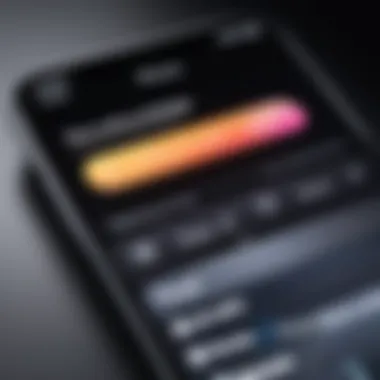
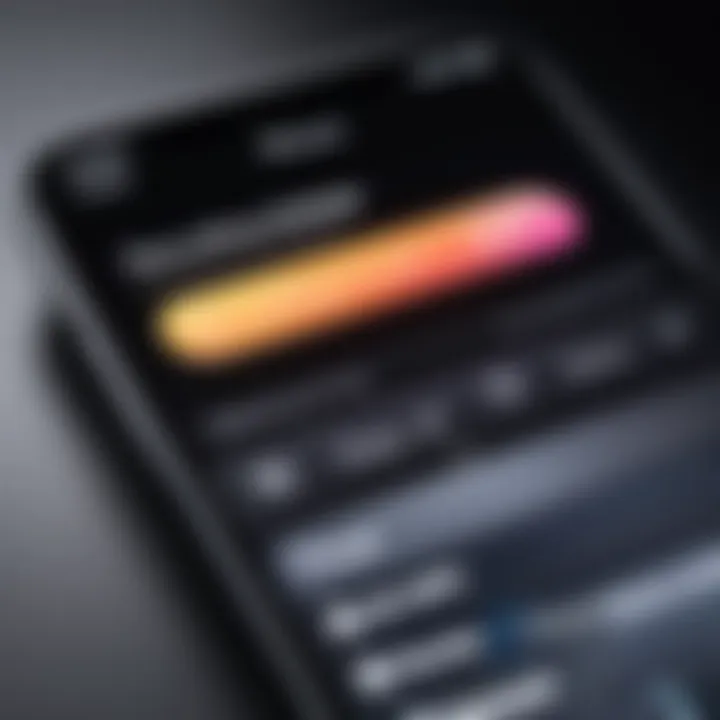
In any technical endeavor, the possibility of encountering issues is inevitable. Understanding how to troubleshoot recording issues on the iPhone is crucial for users who rely on their devices for capturing conversations. Problems can arise from various sources, such as software glitches, incompatible settings, and hardware limitations. Identifying and resolving these issues ensures a smoother experience, allowing users to focus on the content rather than the recording process itself.
Addressing problems promptly can prevent loss of important audio, safeguarding the utility of the iPhone as a recording device. Additionally, knowing common solutions can empower users and increase their confidence to navigate similar scenarios in the future.
Common Problems and Solutions
When recording conversations, several common issues may arise:
- Insufficient Storage Space: If there is not enough storage on the iPhone, recording cannot be saved. Users should check their available storage and consider freeing up space by deleting unwanted files or transferring recordings to a computer.
- Microphone Access Issues: Sometimes, apps may be unable to access the microphone due to privacy settings. Access can be enabled by going to Settings > Privacy > Microphone and ensuring that the intended app has permission.
- Background Noise Interference: Unwanted ambient sound can reduce the clarity of recordings. To minimize this, users should try to record in quieter environments or use external microphones designed to isolate sound more effectively.
- App Crashes or Freezes: If the recording app crashes, it may be due to bugs or outdated software. Ensuring that the iPhone’s operating system, as well as apps, are updated can resolve many of these issues.
In some instances, restarting the device can also help clear temporary glitches that interfere with audio recording.
Seeking Technical Support
Despite all precautions, some issues may still persist. When faced with challenges that cannot be fixed through common solutions, seeking technical support becomes necessary. Users can take several steps to obtain assistance:
- Apple Support Website: The official Apple support website offers extensive documentation and troubleshooting guides for various iPhone issues, including recording problems.
- Community Forums: Engaging with communities on platforms such as Reddit can provide real-world solutions from users who might have experienced similar issues.
- Contacting Customer Service: If the problem persists, contacting Apple’s customer support directly can provide personalized assistance. Users can explain the specific issue and seek step-by-step guidance from trained professionals.
- Visiting an Apple Store: For hardware-related issues, visiting a local Apple Store for in-person help might be necessary. Technicians can diagnose problems that software fixes cannot.
End and Best Practices
In this article, we’ve explored the various methods and legal implications of recording conversations on an iPhone. The significance of knowing how to effectively utilize your device for audio recording cannot be understated. By being informed about built-in tools and third-party applications, users can take full advantage of their iPhones’ capabilities. It’s essential not only to focus on how to record but also to respect legality and ethics in the process.
Recording conversations can provide clarity, serve as documentation, or help in personal projects like interviews. However, understanding your state’s laws regarding consent is crucial. Familiarizing yourself with legal guidelines ensures that you record conversations without unintended repercussions.
Benefits of Adhering to Best Practices
- Clarity and Accuracy: Recording conversations can help maintain an accurate account of discussions.
- Personal Record: It serves as a personal archive for important meetings or interviews.
- Improved Communication: Reflecting on recordings can lead to better communication skills.
Best practices ensure that users approach conversation recording in a respectful and compliant manner. It’s vital to always seek consent when recording others. This practice not only fosters trust but also upholds ethical standards.
Recap of Key Points
Key Elements Explored:
- iPhone Features: We discussed the built-in Voice Memos app and its effectiveness for simple recording needs.
- Third-Party Apps: Various applications like Rev Voice Recorder or Otter.ai were highlighted for enhanced functionality.
- Legal Concerns: Understanding consent laws and the consequences of non-compliance was emphasized as a major consideration.
- Storage Management: Tips on managing storage and sharing recordings through iCloud and other services were given.
- Troubleshooting Tips: We touched upon common problems that users might face and possible solutions.
Remembering these key points will enhance your experience and capability in recording conversations effectively.
Final Thoughts on Ethical Recording
As technology progresses, the ability to record conversations has become more accessible. Yet, with this accessibility comes a responsibility to retain ethical standards. Recording should not be done with malicious intent or without the knowledge of the other party.
Always engage in transparent communication when recording. For instance, inform the person involved that a conversation is being recorded and explain the reason behind it. This builds trust and maintains a positive rapport.
Remember:
"Recording conversations can be an invaluable tool, but it must be done with respect and integrity."
By following these principles, you will navigate the task of recording conversations on your iPhone not just effectively, but also ethically.







